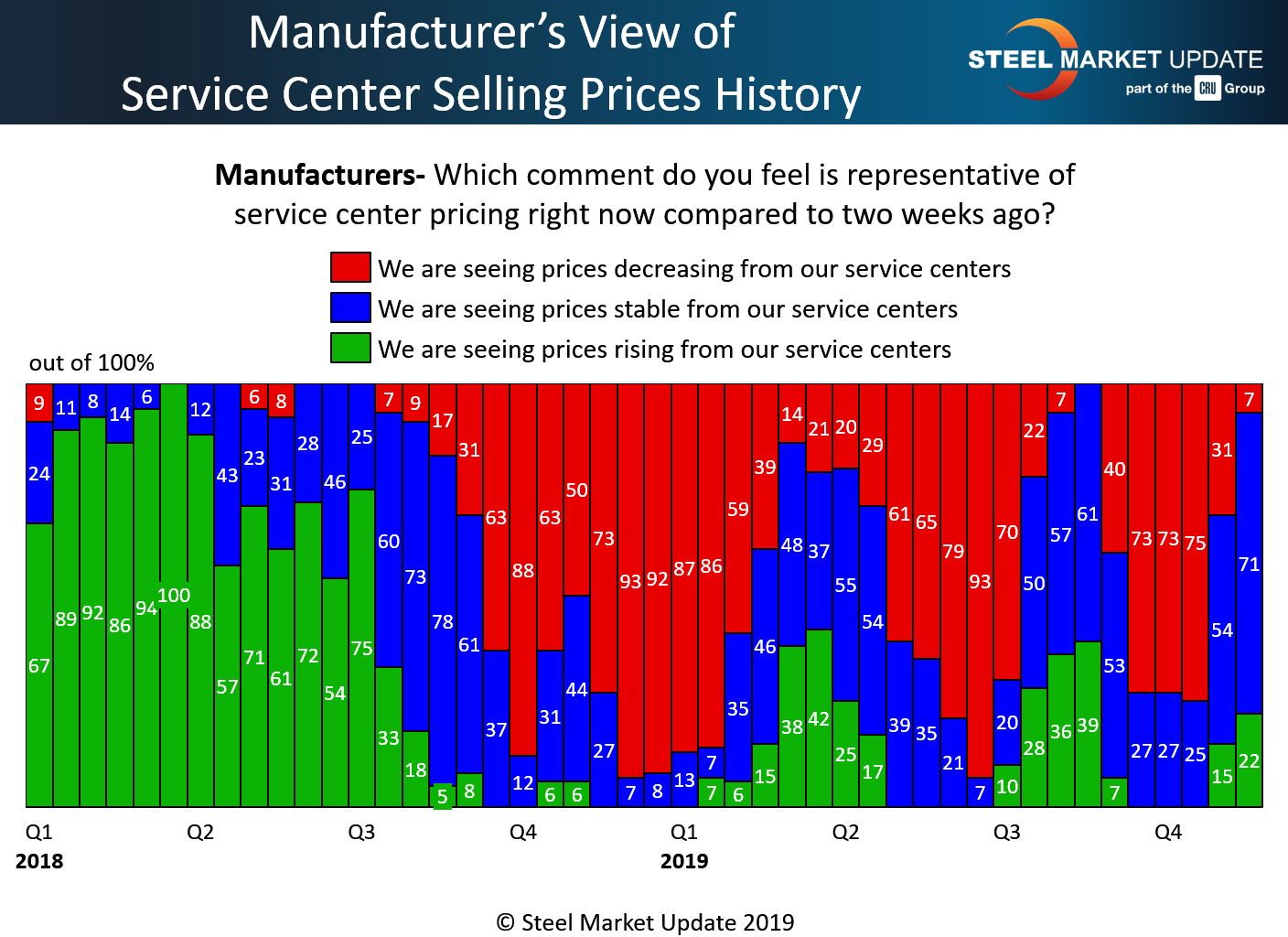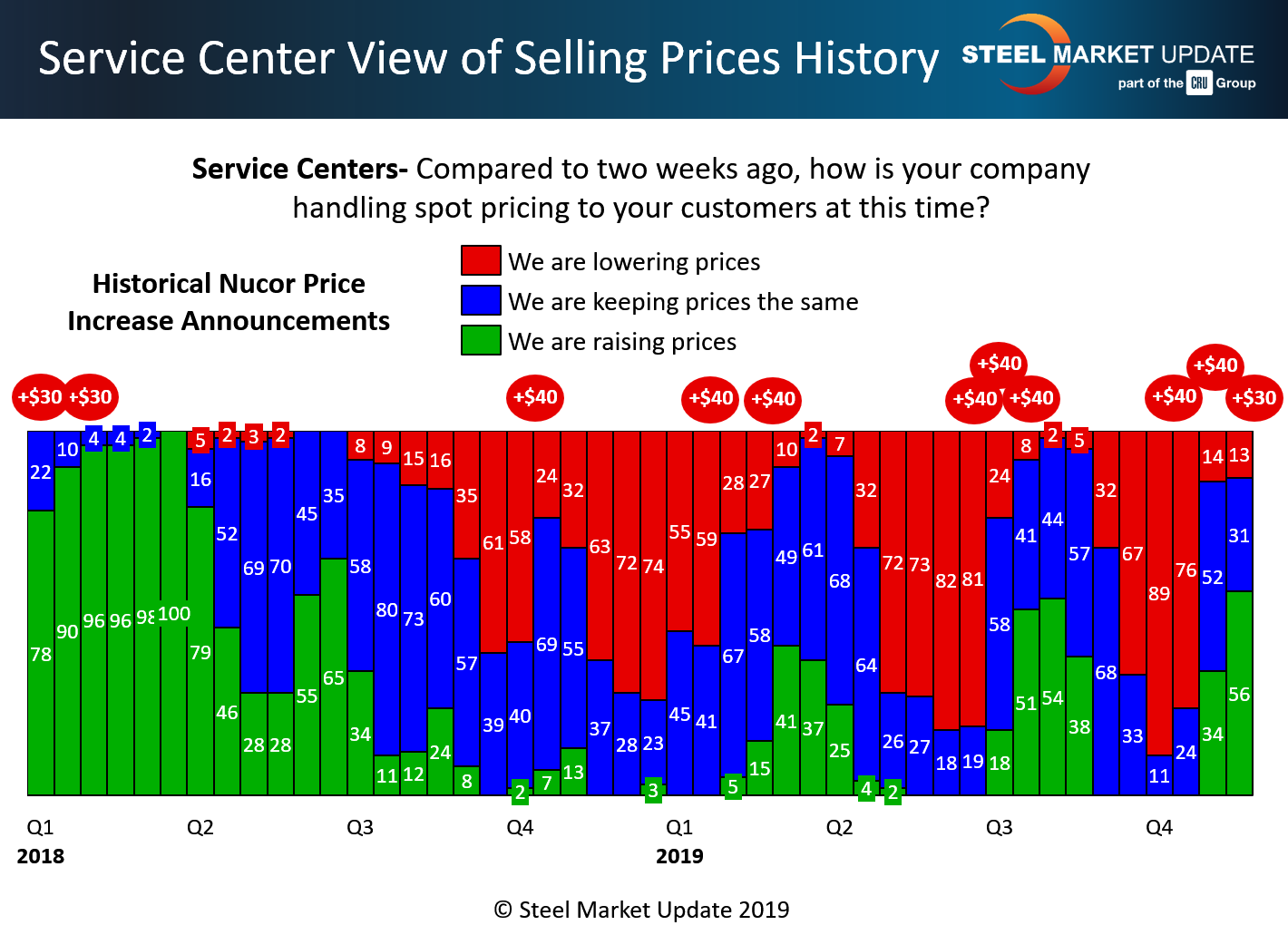SMU Data and Models

Service Center Spot Prices Gaining Traction?
Written by John Packard
November 26, 2019
Last week Steel Market Update conducted our mid-November flat rolled and plate steel market analysis. We invited 480 individuals involved in manufacturing, service centers, steel mills, trading companies and toll processors to participate in our questionnaire. On purpose, the survey is heavily weighted to manufacturing companies and service centers since they purchase the vast majority of the flat rolled and plate steels consumed in North America. In this case, 46 percent of the respondents were service centers/wholesalers and 39 percent were manufacturing companies. The balance consisted of trading companies (7 percent), steel mills (5 percent) and toll processors (3 percent).
Last week’s survey had mixed results when we asked manufacturing companies and service centers to comment on their view of spot pricing out of the distributors.
Only 22 percent of the manufacturing companies responding to that question reported rising prices from their service center suppliers. This is 7 percent higher than what was reported at the beginning of November (and shortly after the initial price increase announcements by the domestic steel mills).

On the other hand, 56 percent of the service centers reported their company as raising spot prices to their end customers. This represents a 22 point jump compared to what was reported by the distributors responding to our survey at the beginning of November.
As you can see by the graphic below, the percentage of those reporting rising spot prices is somewhat in line with what we saw at the beginning of third-quarter 2019. Whether this up cycle is a dead cat or something else will be determined over the next 30-45 days.


John Packard
Read more from John PackardLatest in SMU Data and Models

SMU Scrap Survey: Sentiment Indices rise
Both current and future scrap sentiment jumped this month, though survey participants reported responses before key trade news was announced.

SMU Survey: Sentiment splits, buyers have better view of future than the present
SMU’s Steel Buyers’ Sentiment Indices moved in opposite directions this week. After rebounding from a near five-year low in late June, Current Sentiment slipped again. At the same time, Future Sentiment climbed to a four-month high. Both indices continue to show optimism among buyers about their company’s chances for success, but suggest there is less confidence in that optimism than earlier in the year.

SMU scrap market survey results now available
SMU’s ferrous scrap market survey results are now available on our website to all premium members. After logging in at steelmarketupdate.com, visit the pricing and analysis tab and look under the “survey results” section for “ferrous scrap survey” results. Past scrap survey results are also available under that selection. If you need help accessing the survey results […]

SMU flat-rolled market survey results now available
SMU’s latest steel buyers market survey results are now available on our website to all premium members. After logging in at steelmarketupdate.com, visit the pricing and analysis tab and look under the “survey results” section for “latest survey results.” Past survey results are also available under that selection. If you need help accessing the survey results, or if […]

SMU Survey: Sheet lead times stabilize, plate contracts
Mill lead times for sheet products were steady to slightly longer this week compared to our late June market check, while plate lead times contracted, according to steel buyers responding to this week’s market survey.
